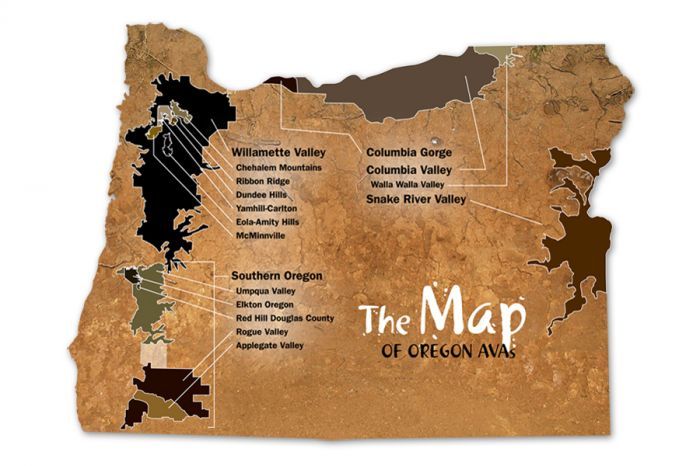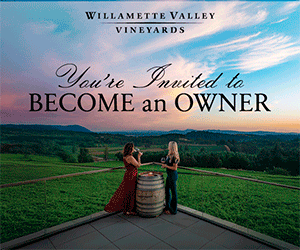Sub-Par Terminology
There is no such thing as a sub-AVA
Ask an Oregon wine geek: “What are the Dundee Hills, or Yamhill-Carlton, Eola-Amity Hills, McMinnville, Chehalem Mountains or Ribbon Ridge?” The likely answer? “They are sub-AVAs of the Willamette Valley.”
But, of course, he’s wrong.
Go ahead, search for “sub-AVA” in the Electronic Code of Federal Regulations. Here’s the result you’ll find: “There were no matches for your search.” Try “sub-appellation.” Same result. The myth is perpetuated in the media kit the Oregon wine industry distributes, which described the Southern Oregon AVA as having “five Sub-AVAs”: Umpqua, Rogue and Applegate valleys, plus Red Hill Douglas County and Elkton. And every day Oregon wine people blithely talk about such-and-such “sub-AVA.”
No. Incorrect. Let’s get it straight: There is no such thing as a “sub-AVA.”
Here’s the deal: Every AVA is a unique, pure and true AVA unto itself. Every AVA stands on its own and is not subordinate to any other AVA. There is no hierarchy of appellations in America where one appellation is “sub-” to any other.
I hate to sound school-marmish, and to some it may seem pedantic in today’s world of laissez-faire language, but the words we use to describe our appellations have real consequences on how we perceive them. Our commonplace laxity in the language we use to describe our appellations does many of them an important injustice.
The prefix “sub-” is defined as “below, secondary, less than.” A so-called sub-AVA then means an AVA that is below, secondary or less than a “regular” AVA. This, of course, does not reflect reality (i.e. it is not true). The Umpqua Valley is no less an AVA than Southern Oregon is, and the Dundee Hills is no less an AVA than the Willamette Valley.
The Alcohol and Tobacco Tax and Trade Bureau of the U.S. Department of the Treasury (mercifully abbreviated as TTB) administers the system of American “appellations,” or as we call them American Viticultural Areas (AVAs). An AVA is defined as “a delimited grapegrowing region” with defined boundaries and a recognized name that “allows vintners to describe more accurately the origin of their wines to consumers, and, in turn, helps consumers geographically identify wines they may purchase.”
An AVA is also defined by the TTB as an “appellation of origin.” To become an AVA, the grapegrowing region must conform to various regulations designed to ensure that each AVA is separate and distinct. Often a new AVA is proposed that exists within the boundaries of an already declared AVA — as the Dundee Hills AVA is entirely within the Willamette Valley AVA, or the Umpqua Valley AVA is completely surrounded by the Southern Oregon AVA.
The terminology the TTB uses for these cases is “overlapping AVAs.” In deciding to award AVA status in such cases, the TTB requires that the proposed AVA show how it is both consistent with the current AVA, and how it is “sufficiently distinct from the existing AVA to warrant recognition as a separate AVA.”
The unfortunate use of “sub-AVA” evolved because we were too lazy to propose a way of describing a smaller AVA formed within a larger one, and which, at the same time, gave the smaller AVA the respect it deserved as being unique and distinct unto itself.
The actual, literal meaning of “sub-AVA” denigrates the legitimacy of the AVA in question. It suggests the AVA is in a one-down position to a larger AVA. Again, this does not describe reality.
So, I have a recommendation for new terminology: Why not call these smaller AVAs “child AVAs” and the larger AVAs in which they are located the “parent AVA”? This would eliminate the inaccurate, misleading, and demeaning “sub-AVA” nomenclature and give these smaller AVA’s the individual identity they deserve.
For instance, as a child AVA, the Dundee Hills shares many of the characteristics of its “parent” AVA, the Willamette Valley. Yet also as a child AVA it has its own distinct personality that distinguishes it from its parent. It is not secondary to the Willamette Valley; it stands on its own two feet as an individual — but related — entity.
Sure, it’s easy (and sloppy) to just say “sub-AVA,” and be done with it. We’re guilty of it all the time. But shouldn’t we value precision and accuracy in how we communicate about something as important as the geographic source of Oregon wine? If so, then let’s stop talking nonsense about sub-AVAs and start better expressing reality by calling them child- and parent-AVAs.



 Cole Danehower is a James Beard Award-winning wine writer and wine industry marketing consultant who has been reporting on the wines of Oregon and the Pacific Northwest since 1998.
Cole Danehower is a James Beard Award-winning wine writer and wine industry marketing consultant who has been reporting on the wines of Oregon and the Pacific Northwest since 1998.









